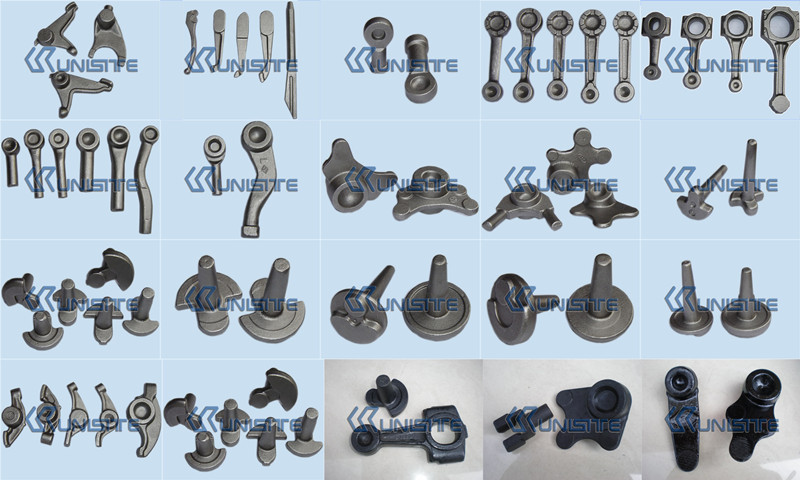Finite element analysis of 3D modeling parameters of flexible wheel teeth. The pre-processing finite element method is an effective tool for studying nonlinear elastic deformation. Ansys is used to simulate the assembly of the wave generator and the flexible wheel, and the state diagram of the engagement between the flexible wheel and the rigid wheel after the simulated deformation is given. In the Ansys numerical calculation, the material has a Poisson's ratio of 0.3 and an elastic modulus of 1.97*e10Pa. The SOLID186 unit is used to divide the soft teeth, the ring gear and the cup in four steps to obtain a better network. grid. In this paper, the static contact between the wave generator and the flex wheel is simulated. The rigid tooth profile is used as the meshing reference. It is not necessary to obtain a relatively uniform mesh, so it can be freely divided.
In the contact simulation between the soft wheel and the wave generator, the outer diameter of the deformed wave generator is slightly larger than the inner diameter of the flexible wheel. In order to simulate the assembly process, the electromagnetic brake installs the wave generator into the prestressed state generated by the flexible wheel, introducing contact. Boundary constraint; the inner cylinder surface of the flexible wheel and the outer cylinder surface of the wave generator are defined as face-to-surface contact, wherein the inner cylinder surface of the flexible wheel is defined as the contact surface, and the outer cylinder surface of the wave generator is defined as the target surface, and the friction coefficient And the contact stiffness is taken as 0.1. Fix the freedom in all directions of the inner ring surface of the bottom plate of the flexible wheel cup. This paper is a static contact nonlinear analysis. Since the deformation of the flexible wheel is 0.5mm, the category of large deformation has been involved. Therefore, the large deformation option is called in the analysis option of the solution setting. The load step and time step are set to 1, and the automatic time is turned off. Step, turn on nonlinear analysis, and select the sparse-direct solver to solve.
Forging is a manufacturing process involving the shaping of metal using localized compressive forces. The blows are delivered with a hammer (often a power hammer) or a die. Forging is often classified according to the temperature at which it is performed: cold forging (a type of cold working), warm forging, or hot forging (a type of hot working). For the latter two, the metal is heated, usually in a forge. Forged parts can range in weight from less than a kilogram to hundreds of metric tons. Forging has been done by smiths for millennia; the traditional products were kitchenware, hardware, hand tools, edged weapons, and jewellery. Since the Industrial Revolution, forged parts are widely used in mechanisms and machines wherever a component requires high strength; such forgings usually require further processing (such as machining) to achieve a finished part. Today, forging is a major worldwide industry
Main particulars
|
|
MAIN PARTICULARS |
|
Material for product |
Brass, steel, Iron, SS, Aluminum |
|
Standard |
ASTM, ASME, DIN, JIS, ISO, BS, API, EN |
|
Certificate |
ISO9001, BV |
|
Dimension |
As per drawing, as large as we can |
|
Processing |
Forging+blasting+Machining |
|
Finishing surface |
Machined surface with tectyl891, blasting and painting(Hempel, Inter, Sigma, Jotun), anodize, polishing |
|
Marking |
as per clients` requirements |
|
Inspection |
material, construction, dimension, heat treatment, hardness, NDT |
|
Quality |
ISO9001, BV, PPAP control production CMM, digital projector, Rockwell hardness tester, hydraulic pressure |
|
Lead time |
5 days for sample, consult with customer for mass production |
|
Delivery |
Express for sample, ocean shipping/air for mass production |
|
Our Capabilities |
CNC Machining, CNC center machining, drilling, milling, turning, grinding, tapping, forging, stamping |
|
Engineering&manufacturing services |
R&D process, tooling and gauging design, product design Integrated CAD/CAM system, test and measuring |
|
Others |
Recyclable, in line with environmental requirements and standards, and reliable |

Forging is a kind of pressure of forging machinery for metal blank, make its produce plastic deformation in order to obtain certain mechanical properties, a certain shape and size of forging processing method, forging, forging and stamping) of one of the two part. By forging can eliminate the metal smelting process of as-cast loose defects, such as optimizing the microstructure, at the same time because of the intact metal flow, forging generally better than that of the same material on the mechanical properties of the castings. Related mechanical load is high, the working conditions of severe important parts, in addition to a simpler shape rolling plate, profile or welding parts are available, use forging more.
Forging Parts
Forging Parts,Aluminum Forging,Brass Forging,Stainless Steel Forging Parts
Shinvast Industry Ltd , http://www.shinvastindustry.com